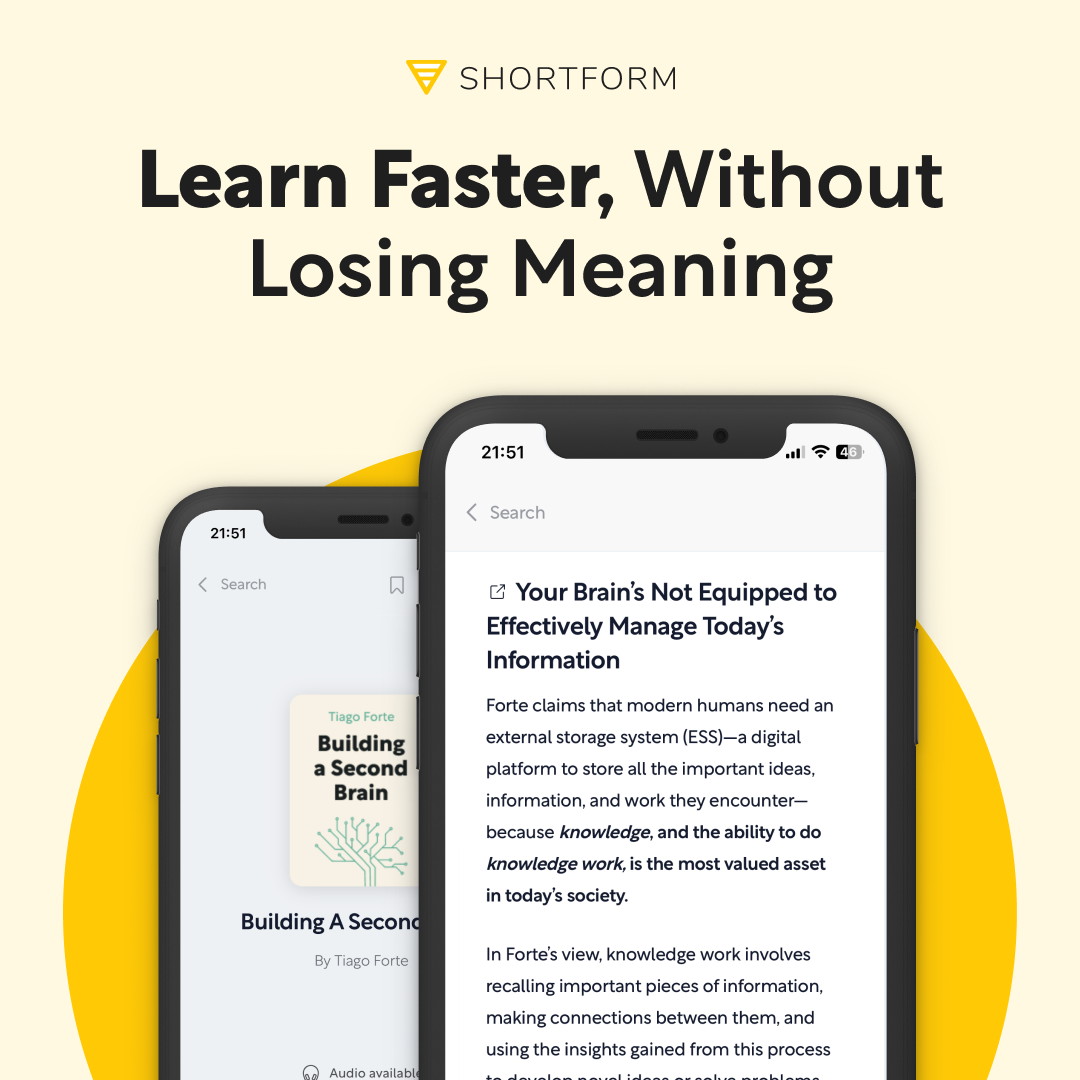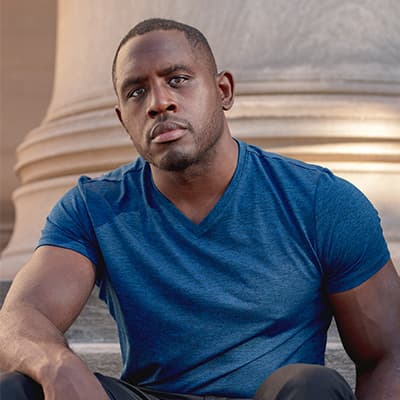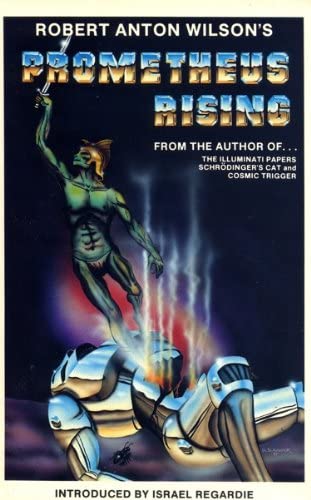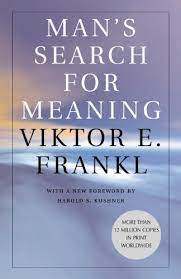Annie Duke wrote an excellent book that teaches you how to make better decisions by thinking of each choice you make as a bet. When you start thinking in bets, a few things start to happen to the quality of your decision-making, the most important of these is that you learn to separate processes from outcomes.
This is an essential skill for many professions, but perhaps none more than high stakes professional poker players. Duke honed her abilities at the poker table, earning more than $4,000,000 in tournament earnings. She is also a World Series of Poker Champion, having won the 2004 $3,000 Omaha High-Low 8/OB. She also served as a consultant to Logic, a company that developed online poker software for multiplayer poker websites.
Today she lectures on behavior decision science and cognitive psychology, using lessons from the poker table to help everyone improve the quality of their decisions. The following are some of the best quotes and ideas from her book, Thinking in Bets: Making Smarter Decisions When You Don’t Have All the Facts.
Decision-making process
1. “Drawing an overly tight relationship between results and decision quality affects our decisions every day, potentially with far-reaching, catastrophic consequences.”
Most people judge their choices based entirely on how things turn out — what Annie Duke calls “resulting.” If something good happens, we assume the decision was good. If something bad happens, we assume it was bad.
But in a world dominated by luck and uncertainty, that’s a dangerous trap. Good decisions can lead to bad outcomes, and bad decisions can occasionally get rewarded. If we only ever judge our decisions based on the results, we never improve our decision-making process — and worse, we may reinforce terrible habits just because we got lucky once or twice.
Over time, this false feedback loop compounds. It can lead to arrogance, missed warning signs, and catastrophic failures — especially in high-stakes fields like business, relationships, finance, and health.
The deeper insight here is you can do everything right and still fail — and that doesn’t mean you should change your strategy. You need to divorce your evaluation of a decision from its outcome long enough to ask: “Did I think clearly, act reasonably, and use the best information I had?” That’s how you protect yourself against randomness.
Key takeaway: Results are noisy. Process is everything.
2. “What makes a decision great is not that it has a great outcome. A great decision is the result of a good process, and that process must include an attempt to accurately represent our own state of knowledge. That state of knowledge, in turn, is some variation of ‘I’m not sure.’”
Real life is messy. We rarely, if ever, have complete information. Yet people tend to act like they know more than they do — or worse, they think that feeling certain is proof of being right.
Annie Duke’s point here is subtle but powerful: a great decision is built on an honest admission of uncertainty.
When you say, “I’m not 100% sure,” it forces you to ask better questions:
- How confident am I?
- What assumptions am I making?
- What evidence could change my mind?
Instead of bluffing certainty, you build a flexible, probabilistic mindset — one that updates as you learn more. This turns decision-making into a skill rather than a gamble.
The paradox is that the smartest, most rational people are often the ones most aware of how much they don’t know. They don’t need fake certainty to act. They make moves based on probabilities, not guarantees.
Key takeaway: Strong decision-making demands humility — and humility begins with admitting you’re operating with partial knowledge.
3. “In most of our decisions, we are not betting against another person. Rather, we are betting against all the future versions of ourselves that we are not choosing.”
This is one of the most beautiful ideas in the entire book.
When you make a decision, you’re not competing against someone else. You’re shaping your own future. Every choice closes off certain possibilities while opening others.
You’re essentially laying bets on:
- Which version of me do I want to become?
- Which future paths am I willing to give up?
Every decision is a fork in the road — and you are the one choosing which version of yourself moves forward.
The trap many people fall into is thinking that decisions are only about winning or losing against external opponents. But life is not a zero-sum game. Most of the time, the real stakes are internal: it’s about who you are becoming with each choice you make.
This frame also emphasizes responsibility: you can’t blame others when you’re the one betting on your future self. And it adds emotional gravity: what you choose today shapes the life you’ll be living tomorrow.
Key takeaway: Every decision is a bet on your future self — not on beating someone else.
The power of truthseeking
4. “Truthseeking, the desire to know the truth regardless of whether the truth aligns with the beliefs we currently hold, is not naturally supported by the way we process information. We might think of ourselves as open-minded and capable of updating our beliefs based on new information, but the research conclusively shows otherwise. Instead of altering our beliefs to fit new information, we do the opposite, altering our interpretation of that information to fit our beliefs.”
This strikes at the heart of cognitive biases, especially confirmation bias and motivated reasoning.
We like to think we’re rational creatures — that when shown new evidence, we will naturally adjust our beliefs. But the truth is darker: we bend reality to protect our egos.
We interpret new facts not as fresh input, but as ammunition for the beliefs we already hold.
- If the evidence supports us, we embrace it.
- If it challenges us, we discredit it, rationalize it away, or ignore it.
This is an ancient survival mechanism. In the tribal days, being wrong could mean losing status, losing trust, losing safety. So evolution favored protecting beliefs over seeking truth.
In modern life, though, this ancient wiring betrays us. It makes us double down on errors, stay trapped in bad decisions, and insulate ourselves inside echo chambers.
If you want to truly improve your decision-making, you have to actively fight against this tendency. You have to deliberately seek out disconfirming evidence.
It’s uncomfortable — but it’s the only path to clarity.
Key takeaway: Truthseeking requires fighting your own mind’s default settings. It’s an act of courage, not comfort.
The power of truthseeking
5. “It’s also helpful to recognize that people serve different purposes in our lives. Even if we place a high value on truthseeking, that doesn’t mean everyone in our lives has to adopt that or communicate with us in that way. Truthseeking isn’t a cult; we don’t have to cut off people who don’t share that commitment. Our pilates friends or our football friends or any of our friends shouldn’t have to take the red pill to remain our friends. Different friends fill different needs and not all of them need to be cut from the same cloth.”
This is a very mature, balanced view — and an important corrective to the “cut everyone off” mentality that often infects self-improvement culture.
If you become obsessed with truth and accuracy (a good thing), it’s easy to grow resentful or disappointed with friends who don’t share your passion for rigorous thinking.
But Annie Duke reminds us: different people meet different needs.
- You don’t need philosophical rigor from your gym buddy.
- You don’t need deep epistemology debates during a Sunday football watch party.
- You don’t need every friend to sharpen you intellectually.
It’s okay for some relationships to simply bring you laughter, companionship, or a shared hobby. Truthseeking is a personal commitment, not a religion you have to impose on others.
Trying to turn every interaction into a seminar on rationality will just leave you isolated — and ironically, worse at living a balanced, happy life.
Key takeaway: Value truthseeking personally — but allow others to simply be human companions, not co-philosophers.
6. “Any attempt at accuracy is bound to fall short if the truthseeking group has only limited access to potentially pertinent information. Without all the facts, accuracy suffers.”
Even if you and your group are deeply committed to truth, there’s a hard ceiling on how good your decisions can be: you can only make decisions based on the information you have.
No matter how honest your intentions, blind spots, missing data, and unknown unknowns create an unavoidable fog.
- If you’re missing critical variables, your models will be wrong.
- If you’re working off bad information, your conclusions will be flawed.
This humbles even the most committed truthseekers.
It’s not enough to be open-minded and honest — you also have to build systems to gather better information.
This might mean:
- Seeking out diverse viewpoints, even ones you dislike.
- Actively looking for missing pieces, not just analyzing the pieces you already have.
- Building environments where dissent is encouraged, not punished.
It also means accepting that some errors are inevitable — and that perfection is not the goal. The goal is to minimize mistakes by constantly improving both your inputs (what information you gather) and process (how you interpret it).
Key takeaway: Good thinking needs good information. Without it, even the best minds will fail.
Learn the method I used to earn a physics degree, learn Spanish, and win a national boxing title
- I was a terrible math student in high school who wrote off mathematics. I eventually overcame my difficulties and went on to earn a B.A. Physics with a minor in math
- I pieced together the best works on the internet to teach myself Spanish as an adult
- *I didn’t start boxing until the very old age of 22, yet I went on to win a national championship, get a high-paying amateur sponsorship, and get signed by Roc Nation Sports as a profession.
I’ve used this method to progress in mentally and physically demanding domains.
While the specifics may differ, I believe that the general methods for learning are the same in all domains.
This free e-book breaks down the most important techniques I’ve used for learning.

Hindsight bias
7. “Hindsight bias is the tendency, after an outcome is known, to see the outcome as having been inevitable. When we say, ‘I should have known that would happen,’ or, ‘I should have seen it coming,’ we are succumbing to hindsight bias.”
Hindsight bias tricks us into thinking we “knew it all along.”
But the truth is, before the event happened, there were dozens of possibilities — and we couldn’t have accurately predicted which one would materialize.
Once an outcome is known, though, the mind rewrites history. It smooths over uncertainty. It makes complexity vanish. It creates a simple, neat story where chaos once existed.
- We overestimate how predictable events were.
- We underestimate the role of luck and hidden variables.
- We judge past decisions unfairly based on future knowledge no one had at the time.
This is dangerous because it erodes learning. If you think the outcome was obvious, you don’t seriously review your decision-making process. You just say, “Next time, I’ll trust my gut,” instead of asking, “How could I have better weighed probabilities given what I knew then?”
It also erodes self-compassion. You beat yourself up for not being psychic. But the truth is, even perfect reasoning sometimes leads to bad outcomes — because life is a probabilistic game, not a chess match where all moves are visible.
Key takeaway: Hindsight makes the uncertain seem inevitable — and blinds us to how uncertainty really works.
Hindsight bias
8. “Just as we have problems with resulting and hindsight bias, when we evaluate decisions solely on how they turn out, we have a mirror-image problem in making prospective decisions. We get only one try at any given decision—one flip of the coin—and that puts great pressure on us to feel we have to be certain before acting, a certainty that necessarily will overlook the influences of hidden information and luck.”
This is the other side of the coin.
If hindsight bias corrupts how we view the past, the demand for certainty corrupts how we make choices about the future.
Because we know we only get one shot at many decisions — the investment, the career move, the relationship — we feel paralyzed.
We think, “I can’t act until I’m 100% sure.”
But certainty is an illusion. There is always hidden information. There is always luck.
Demanding certainty before action leads to two big failures:
- Analysis paralysis: You wait endlessly for perfect information that will never come.
- Overconfidence: You convince yourself you are certain — and ignore the randomness you can’t control.
The healthier frame is to accept that you’re always playing the odds.
Your job isn’t to be sure. Your job is to make the best bet you can with the limited information you have.
That’s real wisdom: moving forward under uncertainty, not waiting until uncertainty disappears.
Key takeaway: You’ll never have perfect knowledge — make the best bet you can, knowing that luck and hidden factors are always in play.
Learn from more books in less time with Shortform

I don’t normally think you should read the summary instead of the entire book, but Shortform has completely changed my mind.
Their summaries are high-level works of art, complete with commentary and additional insights to help you bridge together information and concepts presented in the books.
But that’s not even the best part…
Each summary has an audio version so that you can listen on the go. You’re able to enjoy the summaries the same way you enjoy your favorite podcast! And they cost less than you’d spend on just one book.
Save time and money with Shortform. Use the link below to save 20%
Check out Shortform!Backcasting and Premortems
9. “Backcasting and premortems complement each other. Backcasting imagines a positive future; a premortem imagines a negative future. We can’t create a complete picture without representing both the positive space and the negative space. Backcasting reveals the positive space. Premortems reveal the negative space. Backcasting is the cheerleader; a premortem is the heckler in the audience.”
This insight beautifully balances two powerful methods for decision-making.
- Backcasting asks you to imagine your ideal future. It’s optimistic, visionary, and goal-focused. It creates a compelling picture of success and motivates you to push toward that dream.
- Premortems, on the other hand, do the opposite: they force you to assume that things will go wrong. They ask you to predict what could derail your plans before you even start, making you confront the worst-case scenario.
The beauty is that both are essential for success.
- Backcasting gives you hope and direction, but it can make you overlook the challenges.
- Premortems force you to confront harsh realities, but without the optimism of backcasting, you might feel paralyzed by fear or pessimism.
Together, these methods create a well-rounded approach. The positive space of backcasting fills you with purpose, while the negative space of premortems forces you to address risks head-on, giving you the tools to respond when obstacles arise.
Key takeaway: A complete picture requires both optimism and realism. Backcasting energizes you, while premortems prepare you.
10. “Despite the popular wisdom that we achieve success through positive visualization, it turns out that incorporating negative visualization makes us more likely to achieve our goals.”
There’s a paradox here that might challenge conventional wisdom: while we’re often told to “think positive” and visualize success, negative visualization is actually a more effective strategy.
Why?
- Positive visualization can make us feel like we’ve already won. It’s comforting, but it can lead to complacency.
- Negative visualization, however, forces us to confront what might go wrong. It prompts us to take precautions, build contingency plans, and act with awareness of failure.
By acknowledging and mentally preparing for obstacles, we’re less likely to be blindsided when things inevitably don’t go according to plan. This mindset doesn’t mean being pessimistic; it means being realistic. And by factoring in failure, you’ll work harder to avoid it.
Key takeaway: Negative visualization might feel uncomfortable, but it leads to stronger, more prepared actions. Thinking through what could go wrong makes success more achievable.
11. “A premortem is an implementation of the Mertonian norm of organized skepticism, changing the rules of the game to give permission for dissent. Being a team player in a premortem isn’t about being the most enthusiastic cheerleader; it’s about being the most productive heckler.”
Premortems create a structured space for dissent, which is essential for effective planning. Most teams are built on consensus — everyone agrees on the goal, on the path to success. But this can sometimes lead to groupthink, where no one questions the plan or looks for weak spots.
The Mertonian norm of skepticism is about creating room for constructive criticism and disagreement. In the context of a premortem, it’s not about being negative for the sake of it; it’s about being productive in finding the flaws that could derail the plan. The most valuable team member in a premortem is the one who doesn’t just agree or stay silent but actively seeks out potential failure points.
It’s easy to be a cheerleader — it’s harder to play the role of the heckler who forces the team to face the uncomfortable truth that something could go wrong.
Key takeaway: To plan effectively, dissent is crucial. In a premortem, being a productive heckler is more valuable than being a cheerleader.
12. “Remember, the likelihood of positive and negative futures must add up to 100%. The positive space of backcasting and the negative space of a premortem still have to fit in a finite amount of space. When we see how much negative space there really is, we shrink down the positive space to a size that more accurately reflects reality and less reflects our naturally optimistic nature.”
This quote highlights the finite nature of resources, time, and energy when planning for the future. Both the positive space (backcasting) and the negative space (premortem) have to coexist. Together, they add up to a complete, balanced picture of what the future might hold.
- Backcasting helps you aim high, setting ambitious goals.
- Premortems show you that some of those goals might be unrealistic or unattainable without major adjustments.
When you accurately assess how much negative space exists — that is, how much risk and uncertainty is in the picture — you’re forced to adjust your optimistic vision. It’s a check on your natural tendency to overestimate how smooth things will go. The more you incorporate negative visualization, the more your positive space shrinks to a size that reflects reality.
This leads to more pragmatic optimism, where your goals are ambitious but grounded in an understanding of risk and uncertainty.
Key takeaway: Realistic optimism comes from balancing both the positive and negative spaces. Too much positivity leads to inflated expectations, while negativity helps you calibrate your goals to what’s achievable.
Learn the method I used to earn a physics degree, learn Spanish, and win a national boxing title
- I was a terrible math student in high school who wrote off mathematics. I eventually overcame my difficulties and went on to earn a B.A. Physics with a minor in math
- I pieced together the best works on the internet to teach myself Spanish as an adult
- *I didn’t start boxing until the very old age of 22, yet I went on to win a national championship, get a high-paying amateur sponsorship, and get signed by Roc Nation Sports as a profession.
I’ve used this method to progress in mentally and physically demanding domains.
While the specifics may differ, I believe that the general methods for learning are the same in all domains.
This free e-book breaks down the most important techniques I’ve used for learning.





